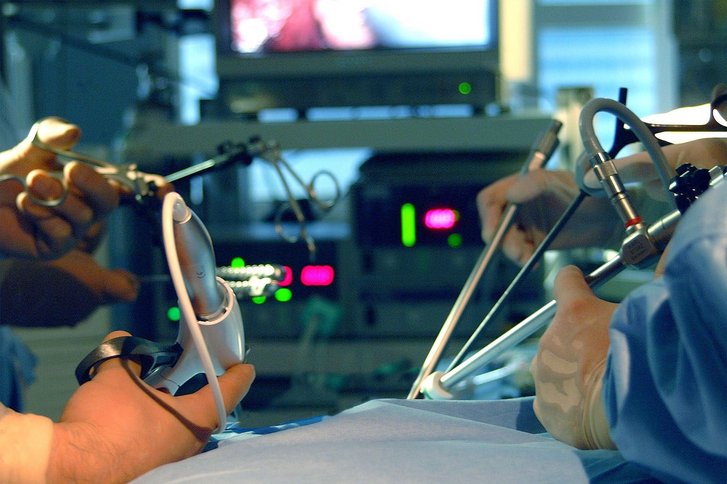
What happens during prostate palpation?
Men over the age of 45 should have an annual prostate screening. In addition to a blood test, this also includes a palpation of the prostate through the rectum and is nowadays the most important screening examination for prostate cancer in Germany.
In the medical context, the examination is also referred to as a digital-rectal examination. Patients often associate the term "digital" with computers or digital data processing. However, the explanation of the term is much simpler: "digitus" comes from Latin and means "finger".
Can you palpate your prostate yourself?
"Palpating your own prostate yourself is not easy and not recommended, but instead should be left to an experienced medical professional," says Dr. Mohamed Al-Mwalad, Chief Physician of the Clinic for Urology and Pediatric Urology and Medical Director at Helios Hospital Cuxhaven.
Pathological changes in the prostate are not well assessed without many years of experience in the field.
Detect diseases with palpation of the prostate gland
Many men shy away from prostate screening, but postponed screening can have serious consequences as men age. Prostate cancer is the most common type of cancer in men.
A rectal exam is one of the main methods a doctor uses to check the prostate. During this procedure, the doctor inserts a finger into the rectum to palpate it for a tumor or possible irregularities. These could include symptoms associated with prostate cancer, enlargement or inflammation of the prostate. For example, if lumps or indurations can be detected, these could be clues to a diagnosis such as a malignant change.
"Because of the anatomical location of the prostate in close proximity to the rectum, rectal palpation is best," says the chief urologist. The urologist can examine the prostate and the lower end of the rectum with the examination via the anus. To do this, the index finger is covered with a rubber glove or fingerstall. Moistening the finger with lubricant allows painless and easy insertion into the anus.
In order to assess the size of the prostate and to differentiate it from the surrounding area, an ultrasound examination of the prostate can be performed in the same session using a special device - the so-called transrectal prostate sonography. If the specialist detects abnormalities during the examination that indicate prostate cancer, the next step is a targeted prostate biopsy. This usually takes place ultrasound-guided through the anus and without anesthesia.
The examinations by the physician have, among other things, the goal of distinguishing a malignant change in the prostate tissue (prostate cancer) from benign prostate enlargement. A benign enlargement has nothing to do with prostate cancer. Diagnostics initially include measurement of urine pressure and ultrasound examination of the urinary bladder and prostate.
Prostate examination by urologist
The examination is usually performed lying down. You should pull your legs towards your body while lying on your side. Using gloves and lubricant, the examiner now carefully inserts the index finger into the anus. The prostate can now be felt through the front of the rectum.
In the PSA test, blood is taken from the patient and examined for prostate-specific antigen (PSA). If there is an above-average concentration of the antigen, this may indicate a disease of the prostate, especially the presence of prostate cancer. As a rule and taking into account certain influencing factors, a PSA value of ≥ 4 ng/ml is considered pathological.
In addition to the palpation examination, a PSA test and a transrectal ultrasound are also part of the preventive checkup with the urologist. The ultrasound examination is performed after the palpation examination. A probe is inserted, which examines the prostate with the help of ultrasound waves.
According to current guidelines, prostate biopsy should be recommended as part of screening if at least one of the following criteria is present:
- Controlled PSA level of ≥ 4 ng/ml at initial screening consultation, taking into account influencing factors.
- Carcinoma-suspicious result on digital-rectal examination
- Conspicuous PSA increase (without change of determination method)
Read more:
Patient Story: from the prostate cancer and operating table back to life
Diagnosis and therapy for prostate cancer with Lutetium-177 PSMA–DKFZ 617
-
Do you need more information about Helios Hospitals or do you want to schedule your treatment?
Please contact our Helios International Office. We will gladly advise you!



